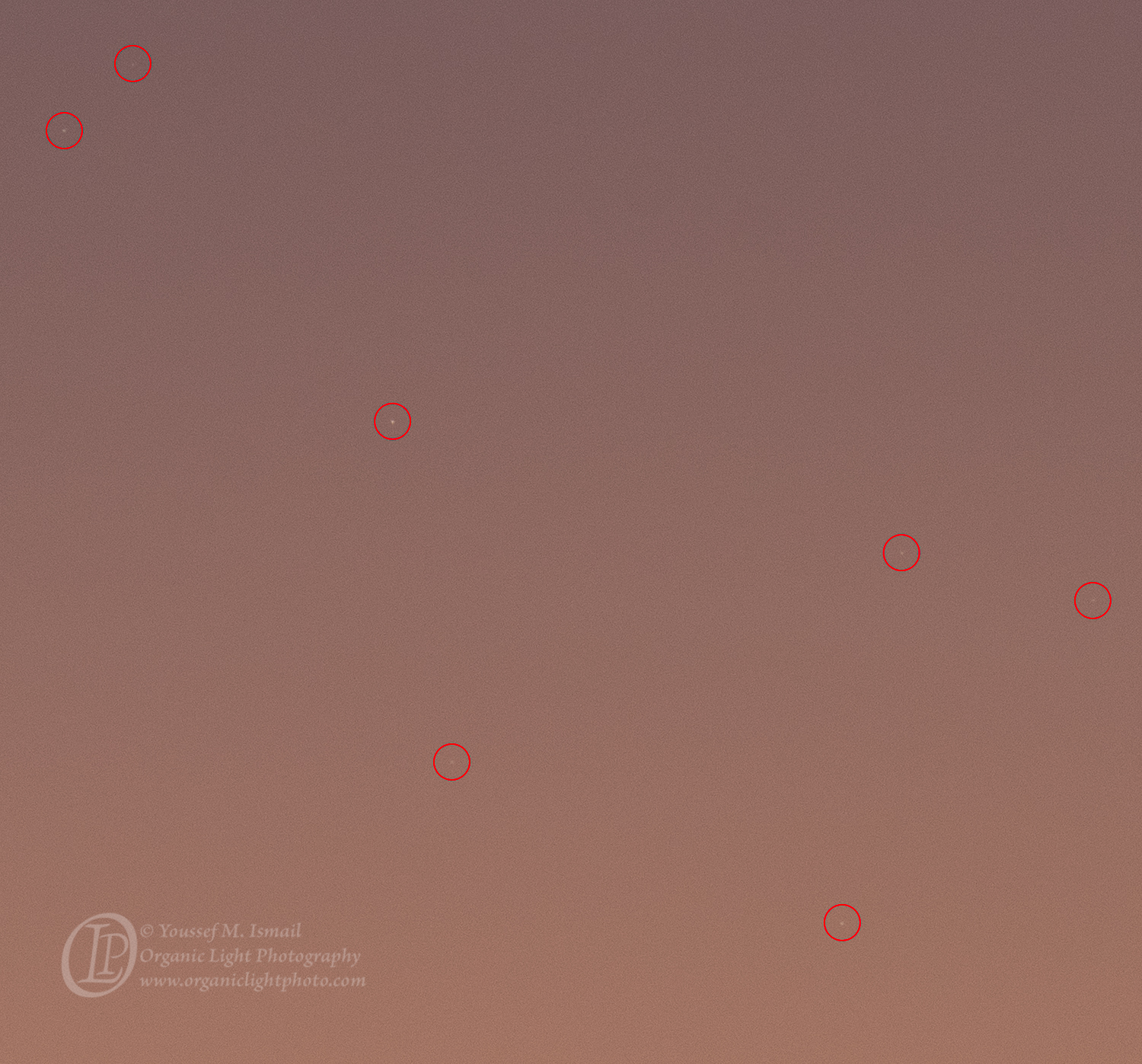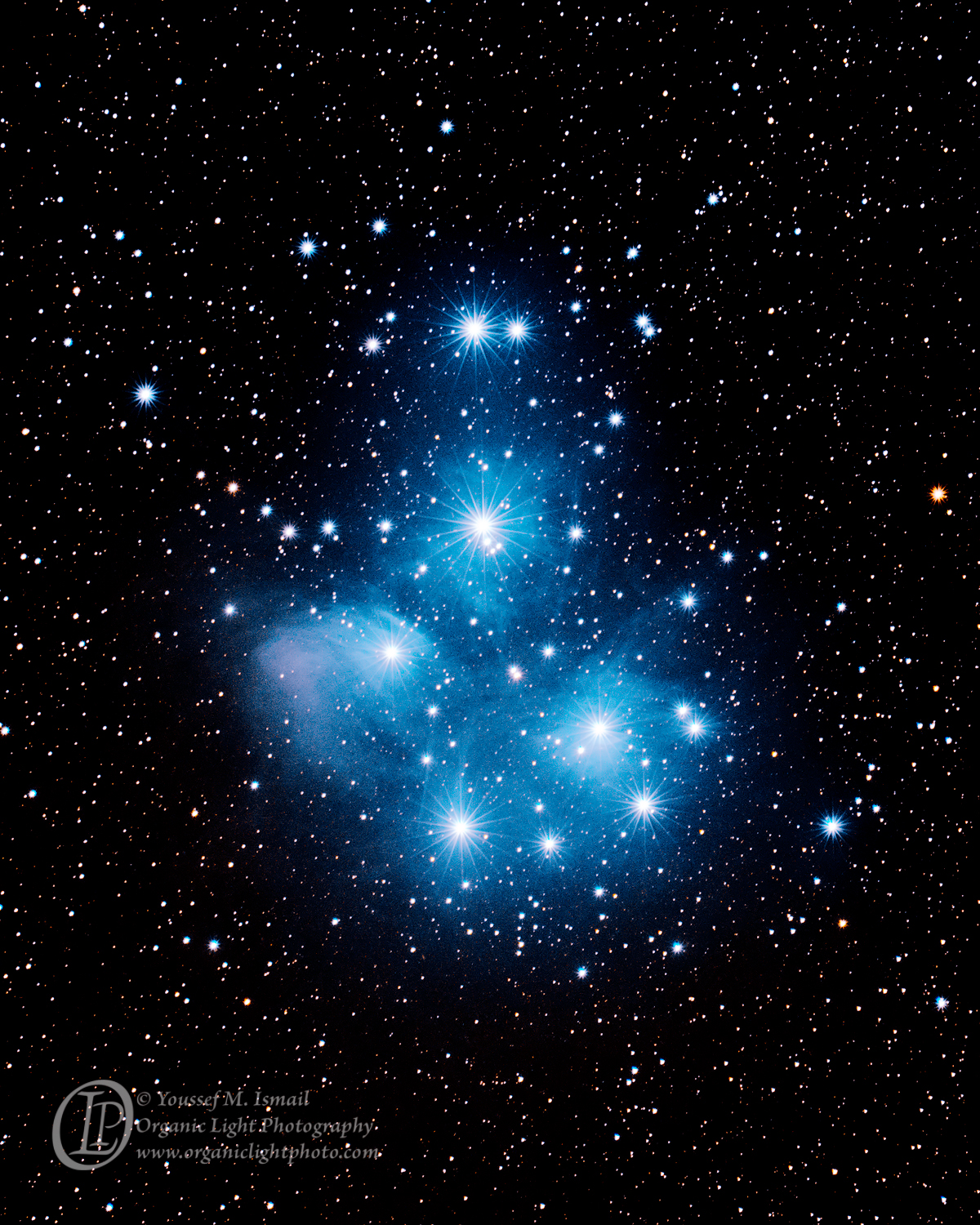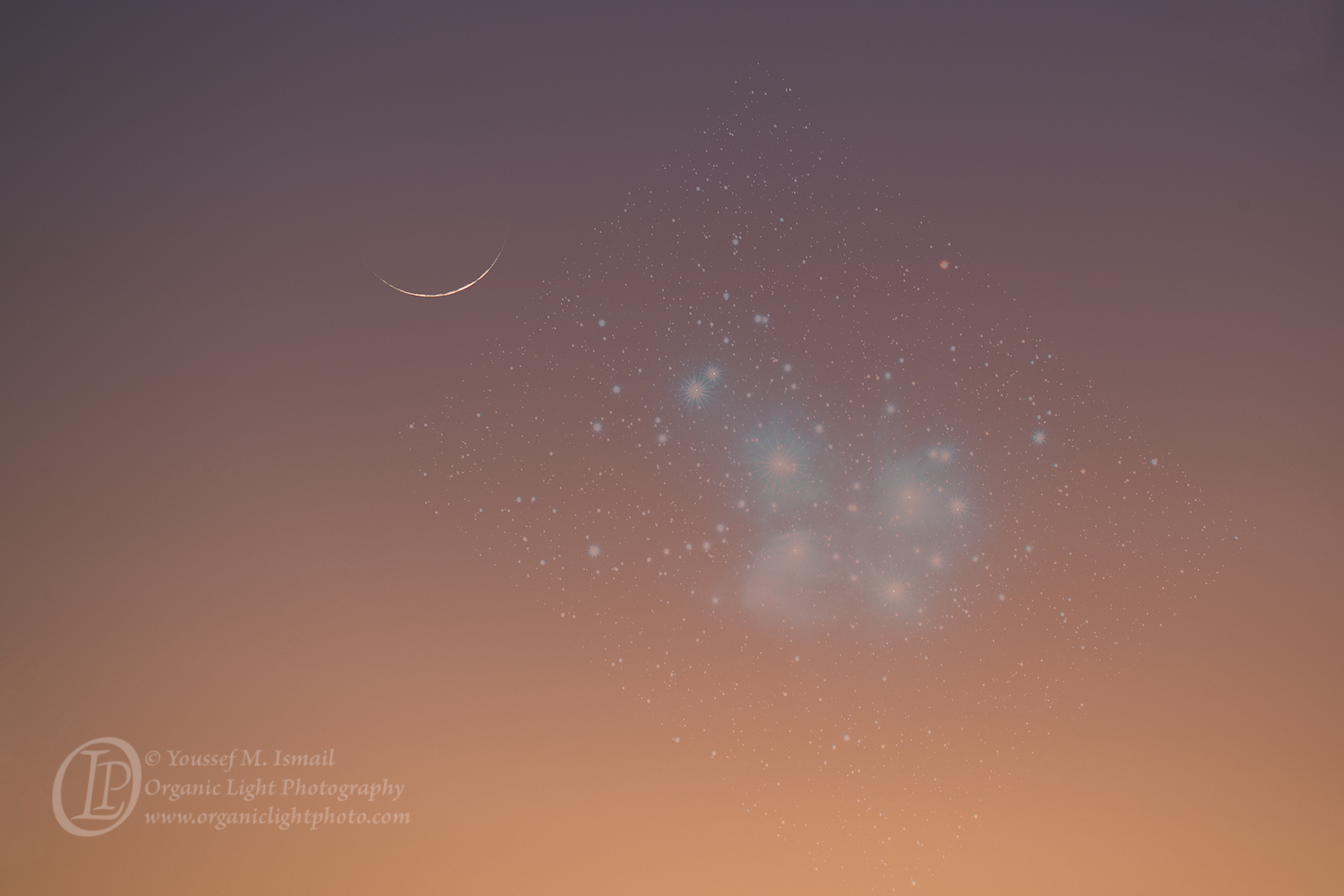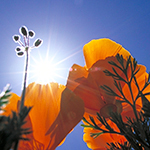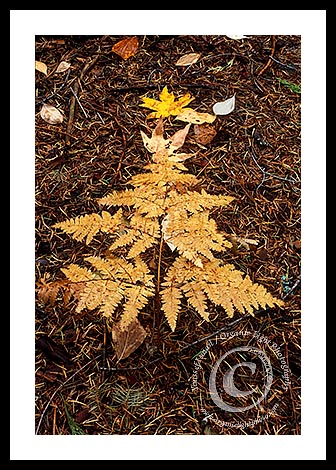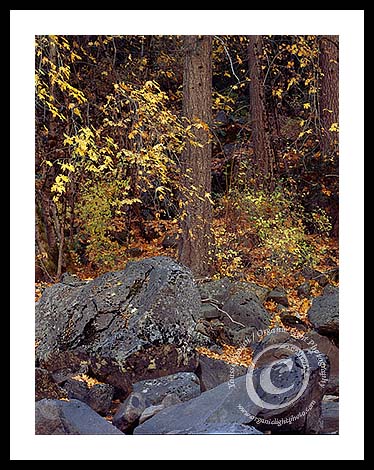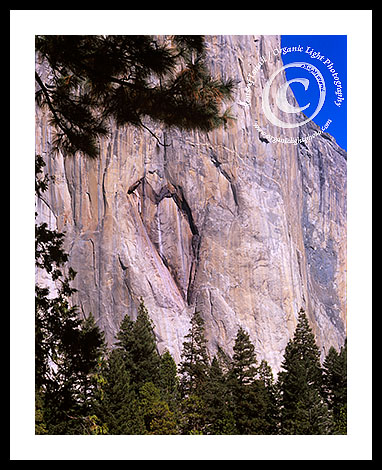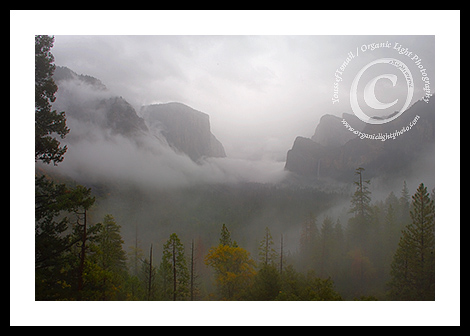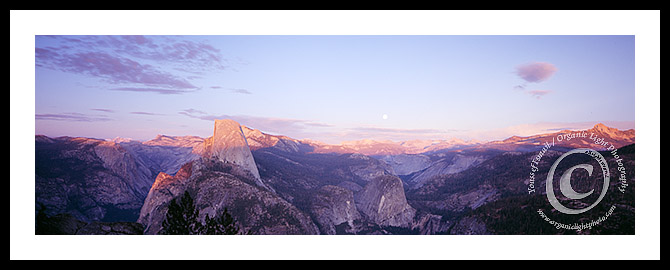Chasing Pleiades
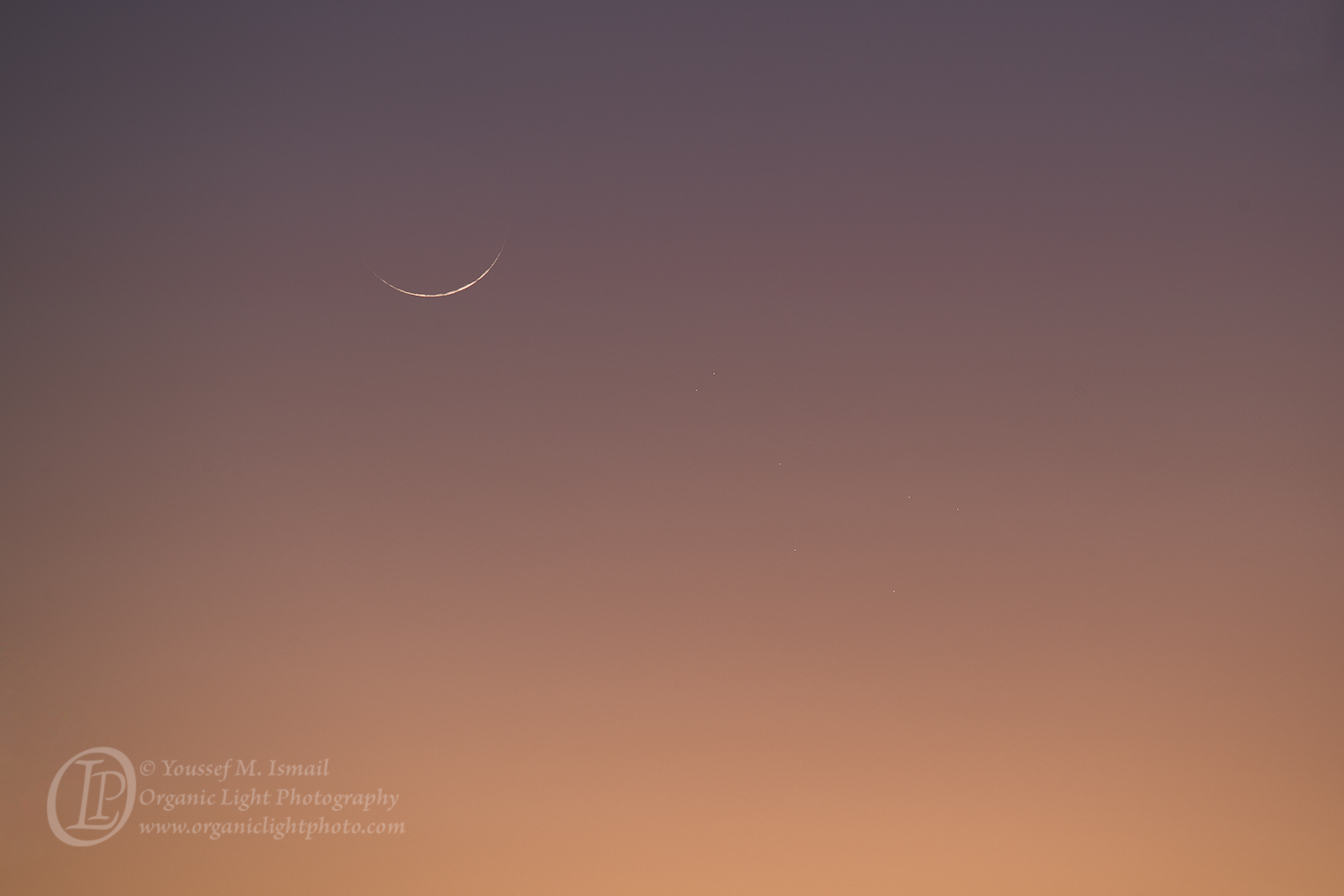
This is the latest new crescent moon photographed on May 8th, 2024.It is not much different from any of the other moons I have photographed. A thin sliver of light, a lovely gentle gradient of color in the sky, and, oh wait, what are those little white dots? Click on the photo for an enlarged view if you can’t see the white dots.
The new crescent moon of this month was within 2 degrees from the Pleiades star cluster. I wondered while making the photograph if I waited long enough if the stars of Pleiades might become visible. The above photograph was taken at 8:34 pm PDT and as I examined the photo on the camera’s LCD screen, I could not see the stars. So I waited and continued to photograph the moon as it approached the horizon. At around 8:45 pm, as I zoomed in on the LCD, I could see two of the seven stars, so I continued to wait and photograph. As the evening waned, the sky became darker, and somewhat more hazy as well and the same two stars were becoming more prominent on the LCD but not the other five. At the same time, the photograph was starting to show much more digital noise as I needed to raise the ISO setting to higher values to keep the shutter speed fast enough that the moon and stars did not blur due to their motion. Below is the last photo I made at 9:04 pm PDT.
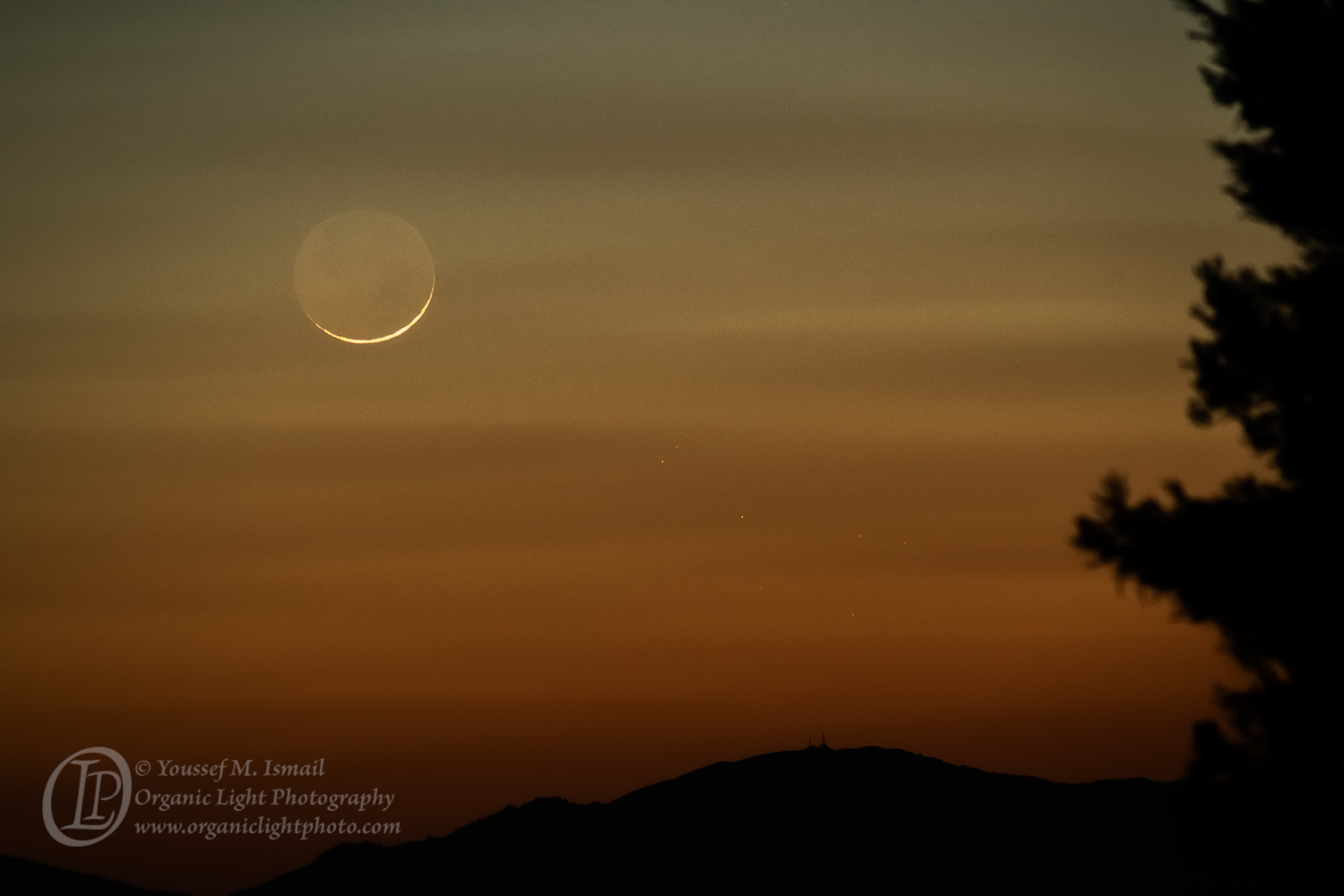
The stars are more evident in this photograph but only because I edited the file to bring them out. I could not see them with my naked eyes in the sky, and further, I still only saw two of the seven stars on the camera’s LCD screen. Yet, all seven were there and the camera did capture them, even in the first photo I made that evening but I did not know that until I returned home and examined the files in detail.
By the time I made the last photo, the ISO setting on the camera had increased to 6400 and the photographs were becoming quite grainy with digital noise. In attempting to remove the noise in post-processing the software also obliterated the stars of Pleiades as well. That is when I decided to go back and look at the first and subsequent photos that were made with lower ISO values when the sky was brighter. So I thought it would be interesting to go through how I processed the first photo to bring out the seven stars in Pleiades.
The image below is the first photo without any additional processing to bring out the stars.
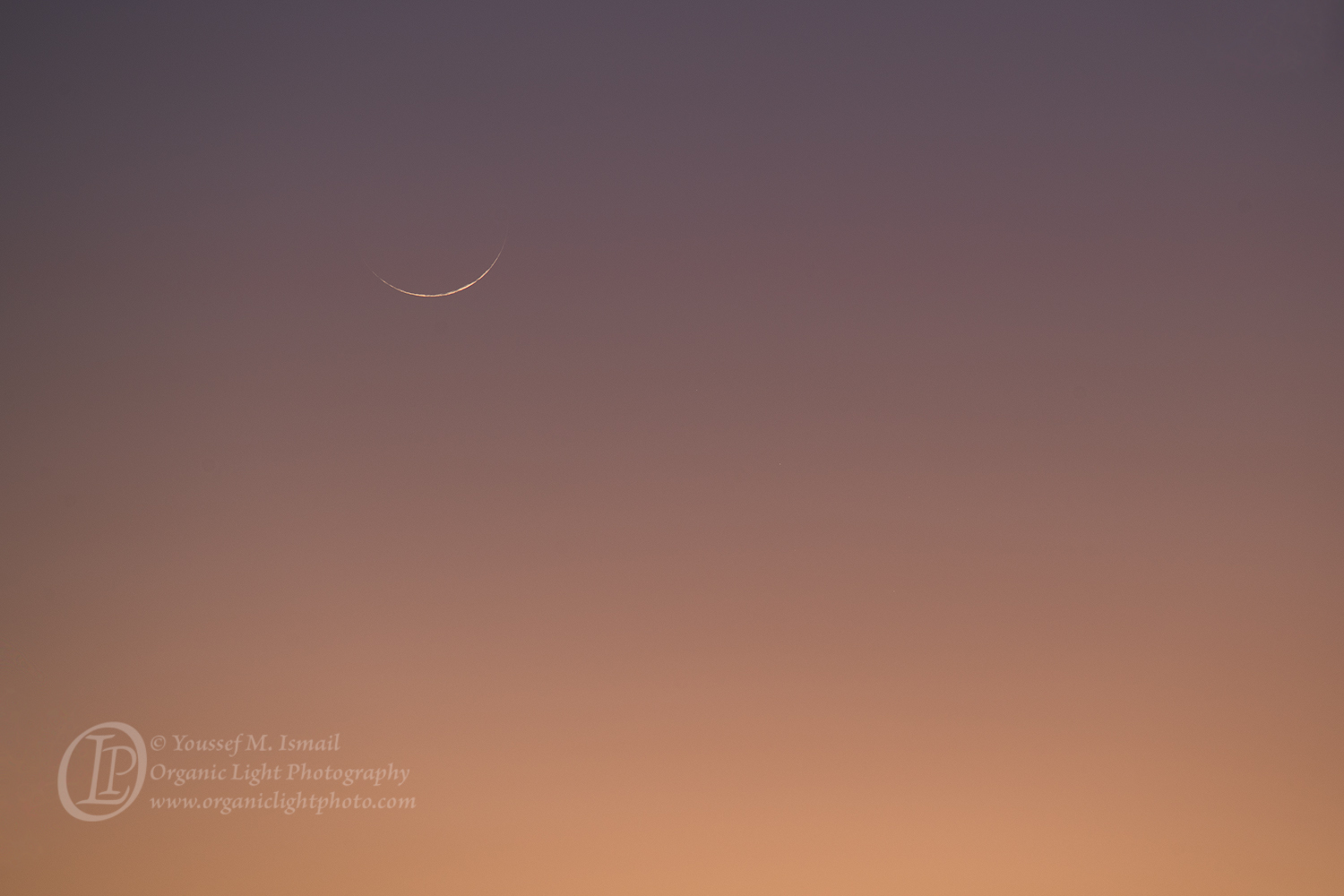
Clicking on the above image might reveal one or two of the stars but faintly. When the view of the image is zoomed in, all seven of the stars are discernable and are found within the red box highlighted in the image below.
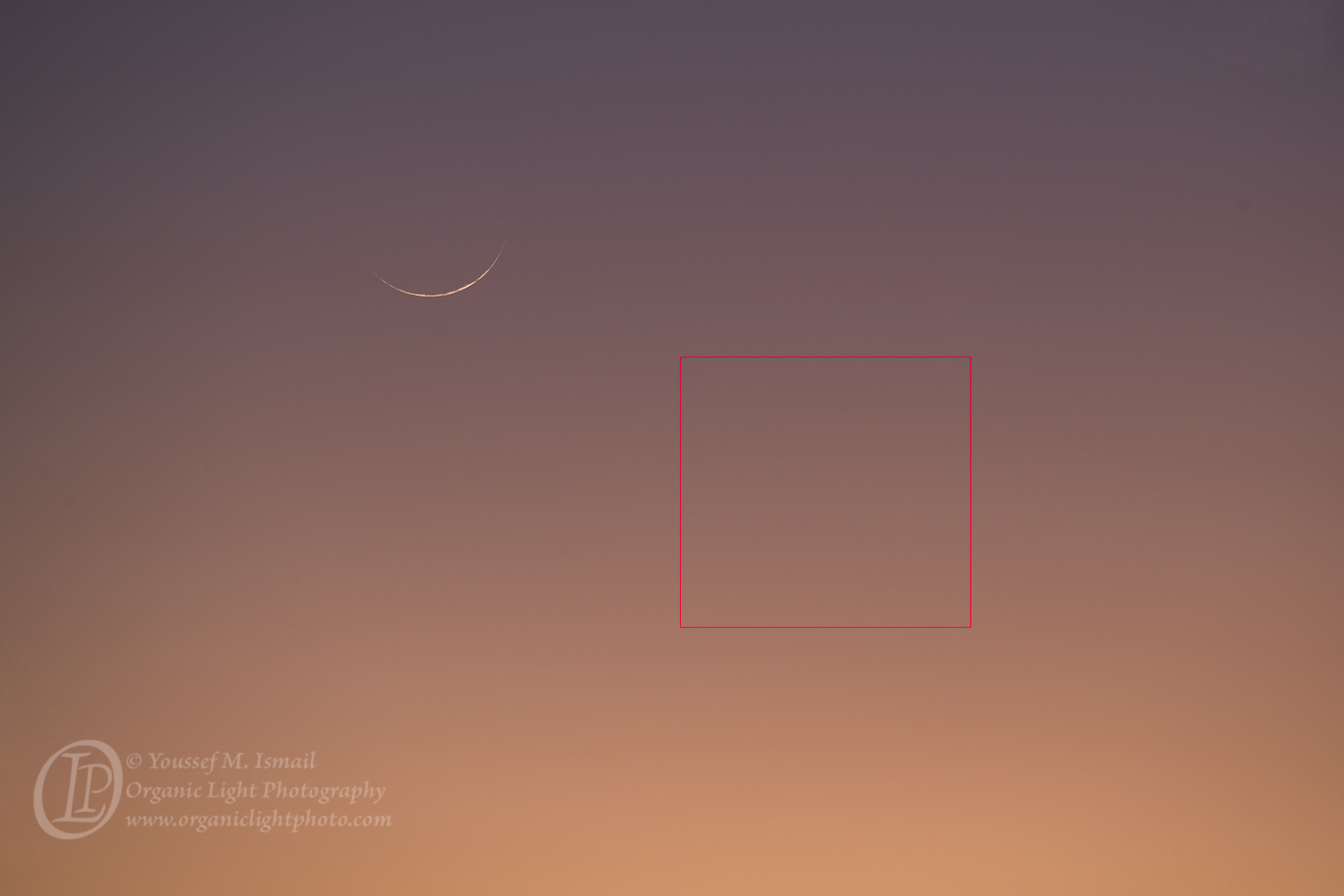
Cropping into just the red boxed area and then zooming in to full resolution the seven stars are all there circled in red in the image below, click on it to see it in full resolution.
A careful selection of the tonality of the faint stars was made to create a tonality mask that was then used to raise the contrast and brightness of the stars alone using some repeated curve layers in Photoshop. However, once I had brought out the stars, I started to wonder if what I had captured in the photo was truly the seven stars of Pleiades or was my camera playing tricks on me and it just so happened to produce random noise that “looked” like the Pleiades.
Earlier in the year in February, I had the same camera on an iOptron SkyGuider Pro star tracker and I photographed Pleiades with over an hour of accumulated data and processed that data to make the following image of Pleiades.
I realized that I had used the same lens to photograph the Pleiades alone as well as the current crescent moon and Pleiades. So I thought what if I bring in the night sky photo of Pleiades and overlay it on the crescent photo to see if in fact the “stars” in the crescent photo are the seven stars in the Pleiades? The following image shows this above deep sky photo of Pleiades overlaid onto the crescent photo and properly aligned with the assumed seven stars. If examined closely, one can see that the pinpoint stars in the crescent photo line up perfectly with the deep sky photo of Pleiades. The seven stars in the crescent photo were in fact the seven stars in Pleiades!
Over the last several days the Sun has been very active and producing some incredibly strong geomagnetic storms that have resulted in aurora that have been visible as far south as Arizona in North America. I was unaware that the aurora could be seen so I did not attempt to photograph it. In fact I only really became aware of the visibility of the aurora because I was inundated with the question if I had photographed the aurora. While this geomagnetic storm event was rare, storms of this magnitude only occur about every 20 or so years, this conjunction of the first day waxing crescent moon with Pleiades is something that I have not been able to find a recurrence of in the past nor in the future. The Pleiades is only near the western horizon in May specifically on May 8th, so it would seem that this conjunction is very rare if not unique. If anyone has the means of determining when a first-day new crescent moon is illuminated just over 1% but not more than 2% and is within 2 degrees of Pleiades will occur again or if it has ever occurred prior to 2024 I would greatly appreciate knowing.
Peace.
